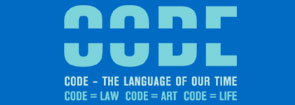 |
|
 |
The Secret Lives of Numbers: Distinction / Net Vision
When we choose to say there are "a lot" of gorillas or "17" gorillas or "around 20," we are making a choice based on our interests and abilities. Those interests and abilities are systematically expressed in the numbers we choose to send out into the world. The Internet provides us with a large and diverse database of the stuff people have sent out into the world, and it naturally includes large numbers of numbers. Since 1997, we have collected at intervals a novel set of data on the popularity of numbers: by performing a massive automated Internet search on each of the integers from 0 to 1,000,000 and counting the number of pages which contained each, we have obtained a picture of the Internet community's numeric interests and inclinations. The interactive visualization which accompanies this statement attempts to make some of the more striking trends visible. Our data can be explored point by point or viewed in larger sets and may lend some insight into the cognitive structure of numeracy, culture, and memory.
Certain patterns are made readily visible in the data browser, such as people's preference for multiples of 10 or reduplicative numbers such as 1010, 1111, 1212, etc. While American zip codes do not present a similarly coherent visual pattern, they can nevertheless be quite prominent — and unlike viewing cities from space, where only the larger cities are visible, here both the larger and the more interesting places are brighter. Further highlights in the data reveal more fleeting reflections of our activities: bright spots such as those for 80486 and 68040 reveal our interest not only in technology, but tell us about the state of that technology at the time. Other points indicate our interest, or lack of interest, in history. And popular culture inevitably makes its presence felt, but perhaps less than we might expect.
Linguists have noted that the ideal construct of proper "language" diverges considerably from its actual use, suggesting that the linguistic "ideal" may be a pale abstraction of a far more nuanced and textured practice. Although we like to think of the use of numbers as objective and removed from our personal lives, it appears they also display elements of "practice." The denizens of the number line are not the mere automatons or corporate tools we have made them out to be: each has a personality, talents, communities, and sometimes a little "je ne sais quoi". They reflect us. This unusual reflection is the focus of this project.
|  |
 |
|




